3. Circular fashion¶
Global lecture with Zoe Romano from WeMake Milano, Italy.
Intro¶
For this assignment was requested to create a zero-waste modular system for open-source fashion. Inspirations about seaweeds and module were researched on Google and Pinterest. A file of illustrator was created to import the best ones and organised by theme and colours. In the primary stage, the idea is to create a bag made with sustainable Portuguese material as Cork and Burel - typical felted wool from Serra da Estrela. Brainstorming for the concept guide us to focus on thematic of kelp and Escher patterns, and the colour green for the hypotheses of using burel and natural for the cork is was chosen to assume the natural colour and texture.
Assignment¶
Create a zero-waste modular system.
- 2D basic shapes design and test seamless patterns on paper.
- Testing with different options and shapes. Iterate.
- Nest the module and laser cut.
- Report and document it. Show and tell.
Tips¶
Use boolean operations to draw irregular shapes. Remember that laser erodes material. Thickness of material must be considered. Play with colours.
Research¶

From left to right: Flip Nicklin/Plainpicture from News Cientist.com; Matthew Meiers, from matthewmeierphoto.com
The application of natural fibres or/and bio-based materials, besides representing innovative ways to circumvent waste management crisis worldwide, helps to reduce negative environmental footprint of related industries as well as health hazards, contributing for an overall discussion. Research from my PhD was used to focus on the assignment. Biomimicry and Sustainability as mainframes. Portuguese fibres Burel and Cork were selected has natural and sustainable materials hypotheses for testing laser-cut modular interlocking system.
Burel¶
The Burel fabric is felted with wool from Serra da Estrela sheep. Besides the milk, meat and the great cheese, cheaper used to take the wool to make overcoats for the hard weather. Serra da Estrela is located in the centre of Portugal and is very snowy in the winter. Its highest point, with 1993 meters of altitude and called Tower, makes it the second-highest mountain in Portugal.
Cork¶
"One of Nature's most extraordinary products Cork is the bark of the cork oak (Quercus Suber L.), which means that it is 100% natural plant tissue. It consists of a honeycomb of microscopic cells filled with an air-like gas and coated mainly with suberin and lignin. Other compounds are identified in its chemical composition, although in less quantity, such as polysaccharides, ceroids and tannins." (Corticeira Amorim)
From Youtube¶
Natural Born Technology, Amorim
Inspirations¶
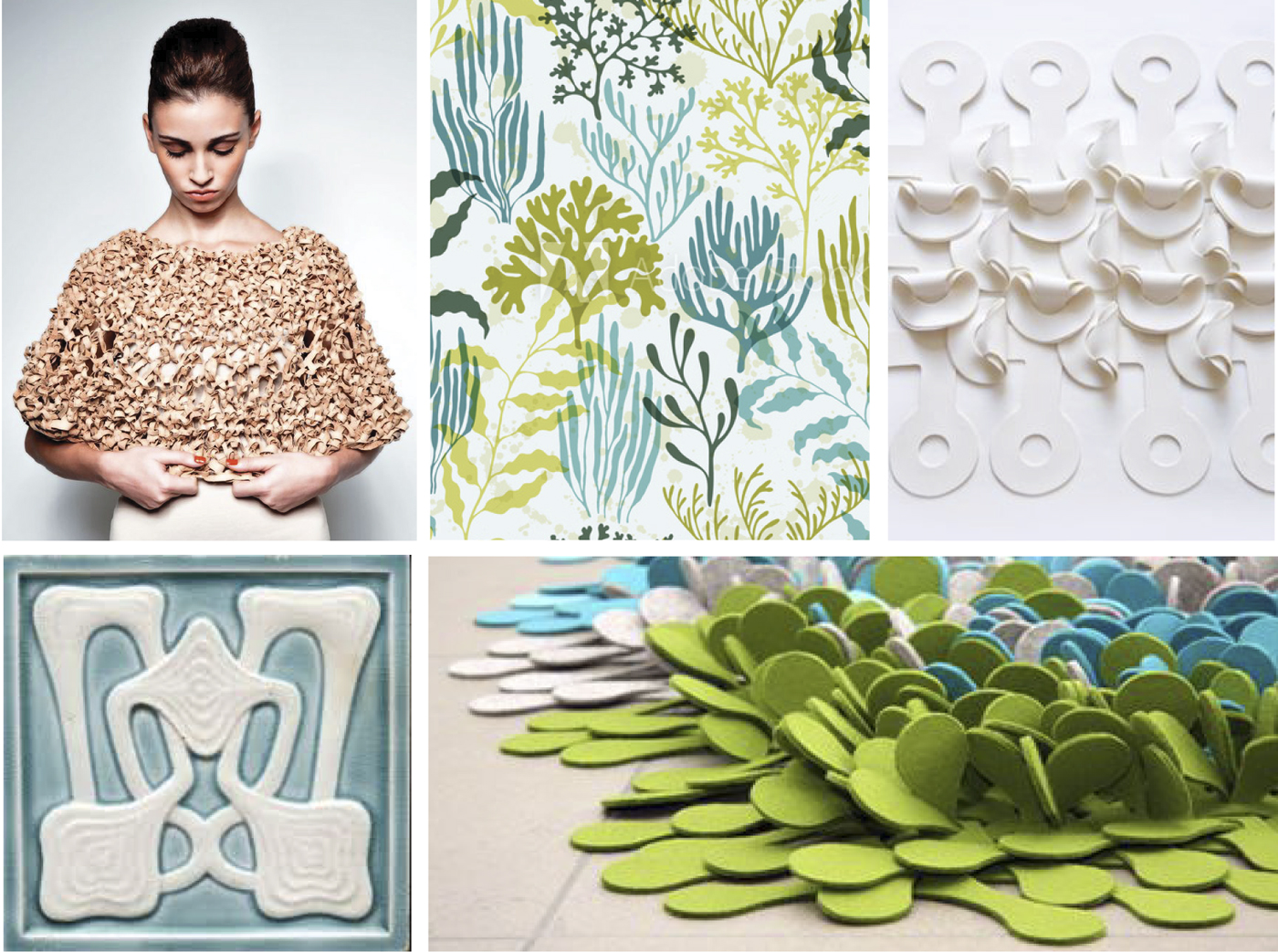
From left to right: Knit Cork from Mónica Gonçalves and Ruben Damásio, picture by Rogério Martions; Coral reaf seaweeds pattern, Sunwards, from Dreamstime.com; Loop by Selma Durand; Art Nuveau Tile, n.a.; Growing carpet by Julika Welge
Methodology¶
Research from my PhD was used to focus on the assignment. Biomimicry and Sustainability were the mainframes. First sketches were made and tested but resulted very complicated and confusing. A simple shape of anfíbios and kelp was chosen for the first pattern. After many trials, the organic module was simplified to a triangular and geometrical shape. Different materials were tested.
Handmade Studies¶
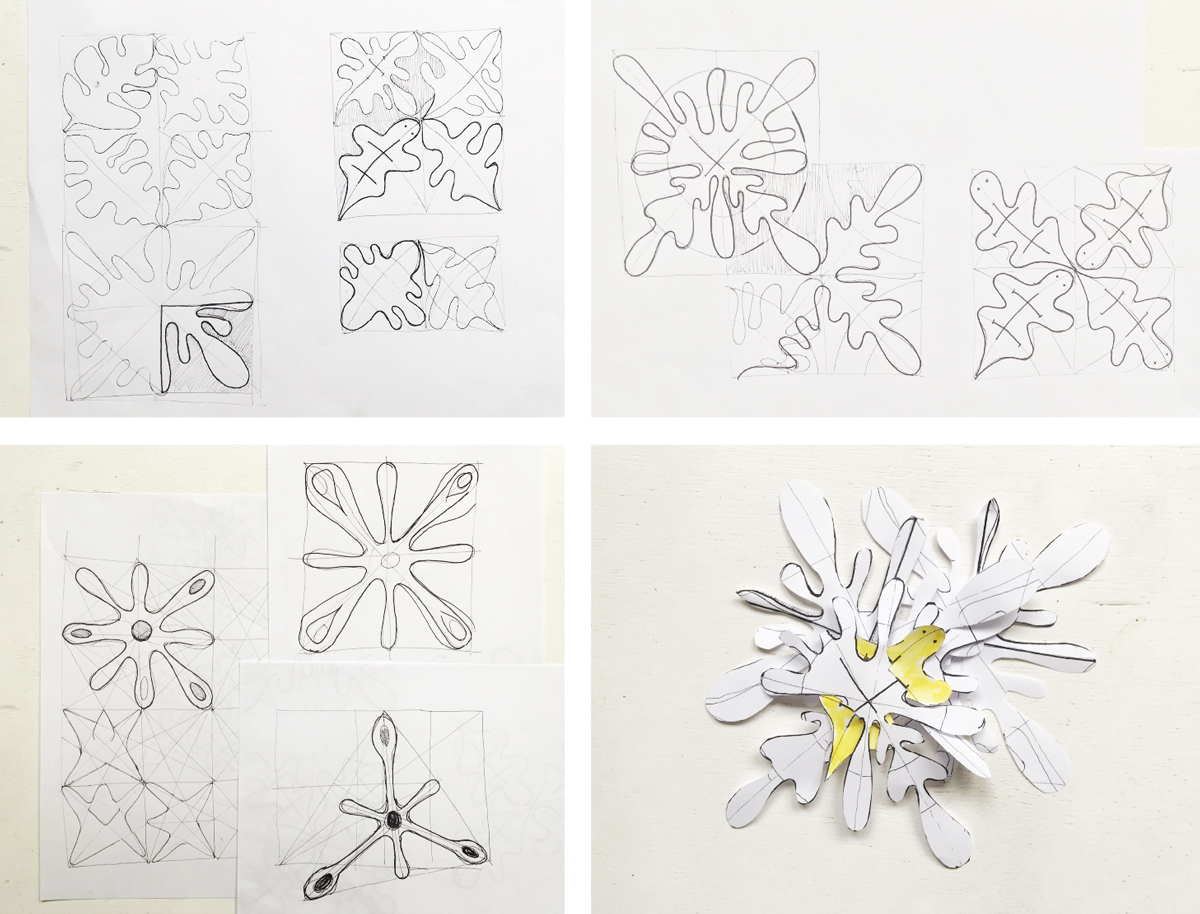 Drawing with pen and Hand cut tests, Carolina Delgado
Drawing with pen and Hand cut tests, Carolina Delgado
Laser-cut CORK 2mm¶
Export in Ai C2 Import to LaserCut3 Then we confirmed the size of the cork. To test the material before wasting material, we try to cut a 1cm square.
Amphibious shape pattern¶
- Speed 90
- Corner 20
-
Power 20
-
Put the fabric on the machine.
- Turn on the machine on the Key.
- Using the arrows of the machine Anchor the laser head on the corner of the fabric/ Cork
- Use heavy woods or metals to fix the material on carpet (we didn't have magnets).
- Move the table down to fit the wooden block fits under the laser head. Or you can put the laser head manually on the spot.
- Don't forget to download /upload your file to the Laser machine after deleting the previous work done by the same.
- Close the tamp with both hands.
- Switch on air bomb to filter the air.
- Laser Schitch on!!
At first trial the cork didn't cut with Power 20. Second test 30 was tried and it worked for the test of 1cm square. Continuing to the upload of the pattern, and with the power 30.
 Amphibius vector pattern tested in Cork, Carolina Delgado
Amphibius vector pattern tested in Cork, Carolina Delgado
Conclusions:¶
It works, but 35 Power may be better because they didn't separate all very well. The pieces on the edges cut better than the one in the middle. Pieces are also very big. They must be scaled down but not too much because the cork breaks when we are interlocking.
Laser-cut FELTER - synthetic¶
Export in Ai C2 didn't work so we exported as dxt. Import to LaserCut3. Then we confirmed the size of the felt. We didn't test the material because we followed Wendy Neale assignment and use the same. * Power 90 * Cut 20 * Corner 20
 Algae vector pattern tested in felt, Carolina Delgado
Algae vector pattern tested in felt, Carolina Delgado
Laser-cut BUREL - wool felter¶
Export in Ai C2 didn't work so we exported as dxt. Import to LaserCut3. Then we confirmed the size of the felt . We adapted from the synthetic felt settings, changing only the cut for 35 becaude the Burel is thicker than the synthetic felt used before. * Power 100 * Cut 35 * Corner 20
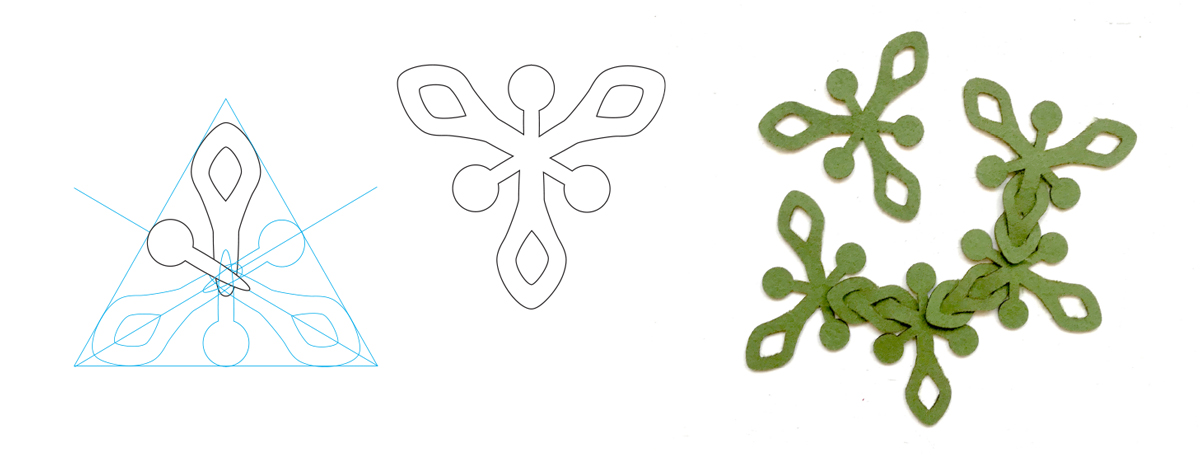 Algae vector pattern tested in Burel, Carolina Delgado
Algae vector pattern tested in Burel, Carolina Delgado
Results on patterns and assembling options¶
The previous pattern had the assebling holes to lose, so it was change the pattern to create a more united plot.
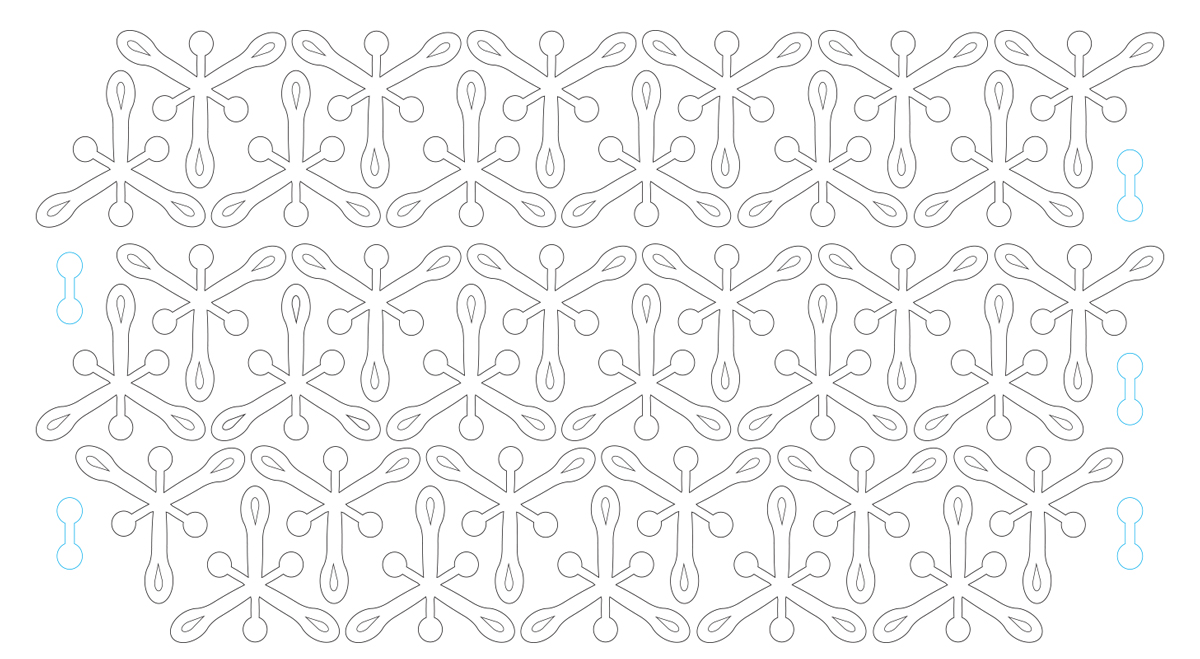 Algae vector Final pattern, Carolina Delgado
Algae vector Final pattern, Carolina Delgado
Following the Laser-cut already tested, we repeat in different burel colours the closer pattern and tested different possible assemblings.
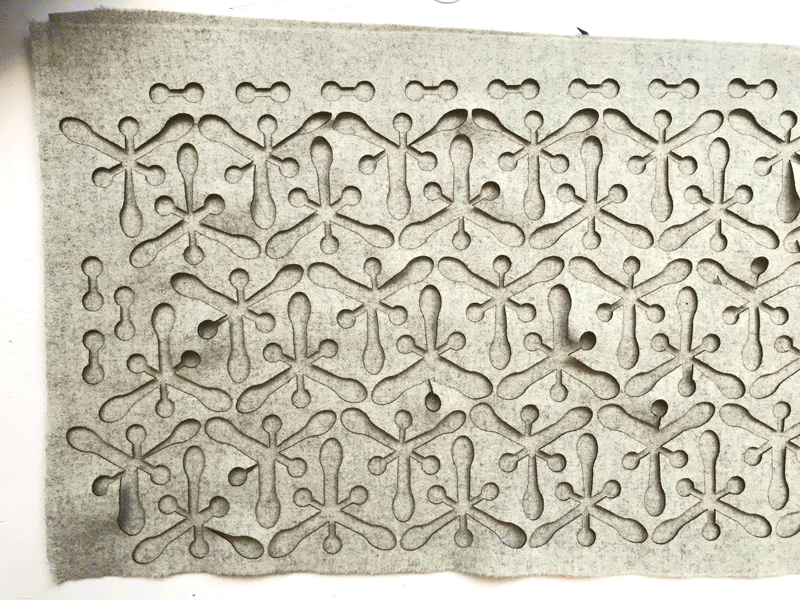 Final tests in Burel, Carolina Delgado
Final tests in Burel, Carolina Delgado
Wastes¶
The pattern was developed to zero waste but some pieces were unused. Maybe it can be used for other garments or decorations?...
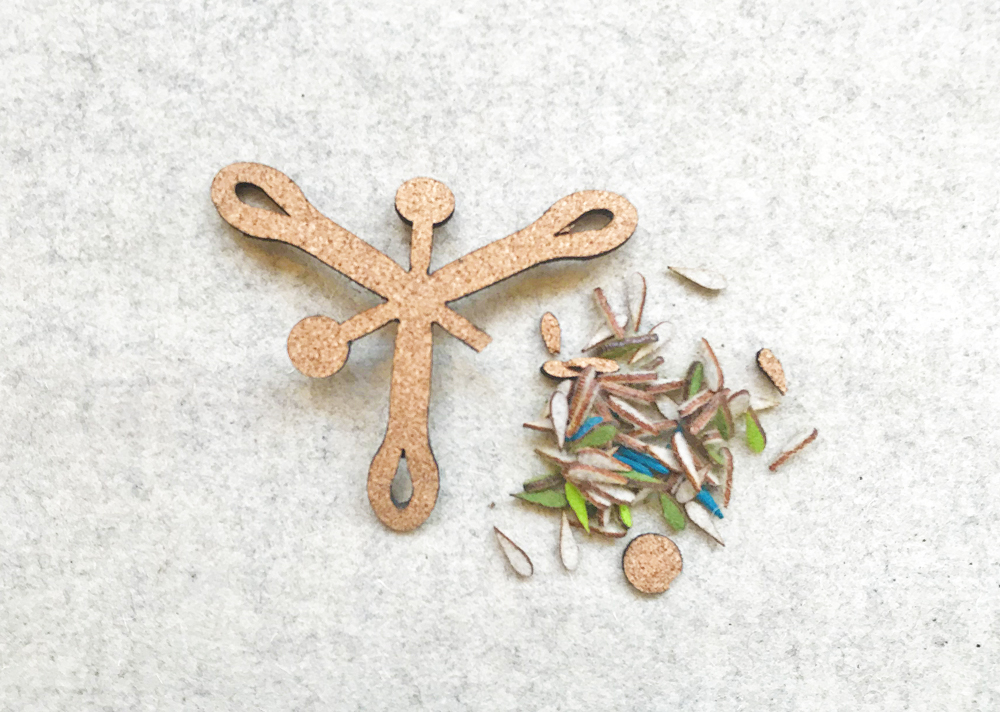
Wastes from projects, Carolina Delgado
Circular Fashion Final Works¶
Burel Bag¶
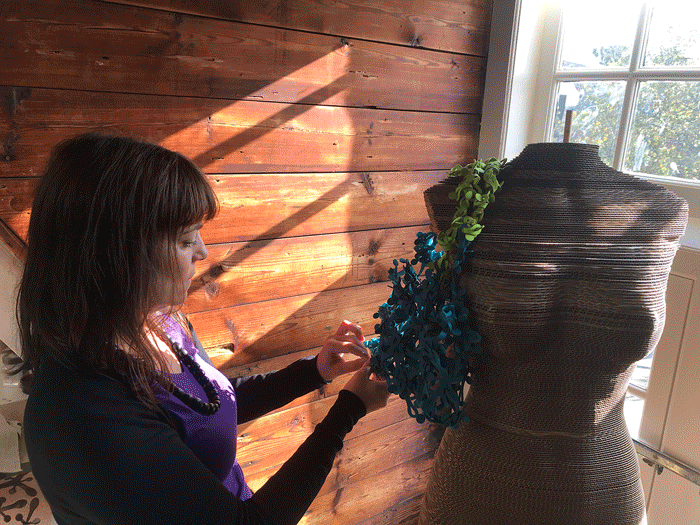
Burel Interlocking system Bag, Carolina Delgado
Cork Garments¶

Cork Interlocking system Fascinator, Carolina Delgado
References¶
- Modular Zero Waste Fashion - Tutorial by Claudia Simonelli Fabricademy 2023-24
- OpenWear - Openwear is an open-source brand concept - A collaborative platform for ethical fashion production, new attitudes and peer education.
- Open Source Circular Fashion Fabricademy catalogue - Browse and share your designs and help grow this library!